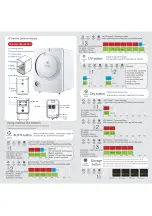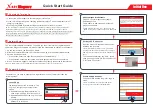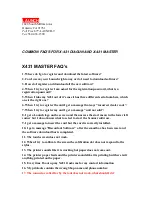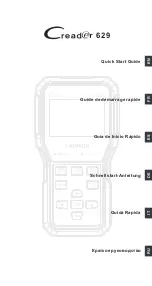
CDMA2000 Signaling
R&S
®
CMW-KG8xx/-KM8xx/-KS8xx
482
User Manual 1173.9511.02 ─ 11
Eb/Nt
Example: Eb/Nt Calculation
The ratio of the combined received energy per bit to the effective noise power spectral
density for the Control Channel, or Forward Traffic Channel at the mobile station
antenna connector.
The signal to noise ratio is calculated according to standard TIA/EIA IS-98, section
1.4.2.1:
●
Traffic E
c
: Average transmit energy per PN chip
●
Traffic_Chip_Bit
: Number of PN chips per TCH bit
●
Î
or
: Power spectral density of the FW CDMA channel received at the MS antenna
connector
●
I
or
: Total transmit power spectral density of FW CDMA channel at BS antenna con-
nector
●
I
oc
: Power spectral density of an AWGN source, measured at the MS antenna con-
nector
If the attenuation between the BS (R&S
CMW) and the MS under test is negligible ( or
Î= I
or
), then Eb/Nt is given by the power
Level
on the traffic channel and the data rate in
the forward channel.
Level and Frame Rate Dependencies for F-FCH
The F-FCH level specifies the channel level for the
Full
frame rate. If a frame rate other
than
Full
is used, the actual test traffic level is lower:
Test traffic level = F-FCH Level + Corr.
The level definition for
Full
frame rate has been chosen because it is always valid,
even for speech connections where the frame rate varies according to the voice activ-
ity. The level correction values
Corr.
are listed in the table below.
Table 4-6: F-FCH: Dependencies between frame rate and level correction.
RC 1
RC 2
RC 3,4
RC 5
bit/s
Corr./dB
bit/s
Corr./dB
bit/s
Corr./dB
bit/s
Corr./dB
Full
9600
0
14400
0
9600
0
14400
0
Half
4800
-3
7200
-3
4800
-3
7200
-3
Quarter
2400
-6
3600
-6
2700
-5.5
3600
-6
Eighth
1200
-9
1800
-9
1500
-8
1800
-9
General Description
深圳德标仪器
135-1095-0799
















































